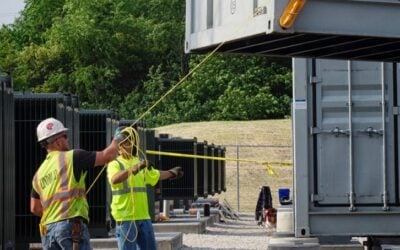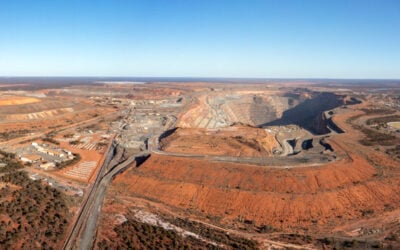The island of St Eustatius often has fast-moving cloud cover, adding to the complexity of the project. Source: Flickr – Mike Roberts
Statia Utility Company (STUCO), which serves Dutch Caribbean island St Eustatius, has welcomed a “user-friendly” hybrid system which enables it to provide enough clean energy to cover more than 23% of the island’s annual electricity demand.
STUCO regard the solution as tailored to its needs; in that it is “both very low maintenance and also a stand-alone operation”, according to statements by company CEO Fred Cuvalay.
“We were looking for fossil fuel reduction and at the same time for a solution with both very low maintenance and also stand-alone operation. SMA provided a hybrid system solution exactly tailored to our needs, which is extremely user-friendly,” Cuvalay said.
As a result of the green transition, the island’s local utility is now able to reduce its fossil fuel consumption by up to 30% and displace 2,200 tonnes of CO² per year.
Try Premium for just $1
- Full premium access for the first month at only $1
- Converts to an annual rate after 30 days unless cancelled
- Cancel anytime during the trial period
Premium Benefits
- Expert industry analysis and interviews
- Digital access to PV Tech Power journal
- Exclusive event discounts
Or get the full Premium subscription right away
Or continue reading this article for free
German PV inverter and system technology specialist SMA, which deployed the plant, is taking advantage of the long sunshine hours the island experiences with the combination of utility scale PV (1.9MWp), solar-plus storage (1MW) and diesel generators. The move to a clean energy system, which is to provide the entire island with electricity, is a cost-effective choice for St Eustatius. Up until March 2016, the island’s power supply was fully derived from diesel fuel, which is not only environmentally-adverse, but lays such locations bare to the price spike issues linked to an overreliance on fossil fuels.
The combination of both solar PV and SMA’s Sunny Central Storage 1000 solution integrated into the power station with the company’s Fuel Save Controller 2.0 complements the diesel generators – which work to offset solar’s fluctuating energy source for a harmonised delivery of power. The storage component also serves to stabilise the grid via frequency regulation and ramp-rate control.
Renewables in island grids
A similar project was embarked on this year by Younicos and Recharge A/S, who together commissioned a ‘grid-forming’ Portuguese island project.
Such hybrid endeavours make economic and environmental sense for grids in islands and remote areas. The pairing of utility-scale renewables such as solar or wind with batteries can effectively revolutionise power generation; not only by solar-shifting but also by stabilising the power system. In the long-run it will also serve as a cost-competitive alternative to expensive fossil fuels.
The International Renewable Energy Agency (IRENA) published a technology roadmap for energy storage last summer that found “substantial socio-economic benefits” to utilising renewable energy on islands and remote areas instead of legacy diesel generators.
Cumulative findings on separate assessments of Fiji, Vanatu and the Marshall Islands concluded that renewables in this context could lower power generation costs and improve energy independence and access to power.
The main obstacle to this hybrid solution in island and remote contexts is that often utilities in these areas have less experience or access to integrating new energy sources into the grid, as compared to utilities in areas with more developed grids. The true selling point of the SMA project is in its ability to mitigate the technical challenges that utilities in such situations would face, by implementing a solution that is easy to operate and maintain.
The installation in St Eustatius is the first project of its kind in the entire Caribbean region and will serve as a great example of the possibilities of sustainable power in the Caribbean islands and beyond.
SMA’s promotional video for the ‘flagship’ project





